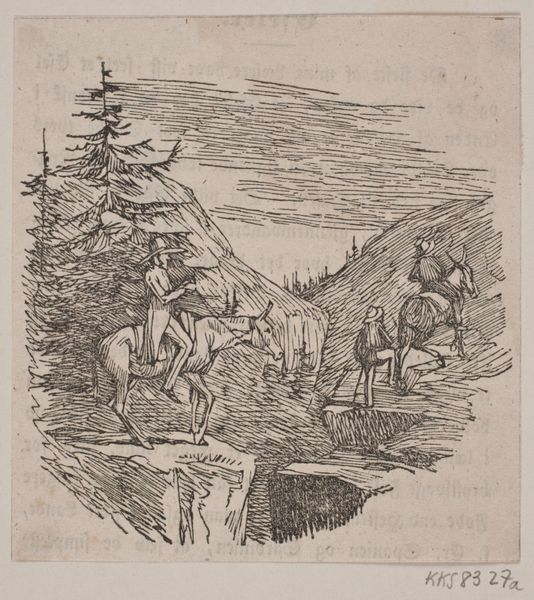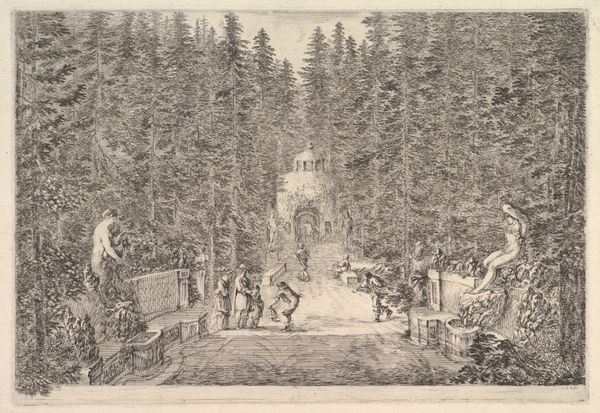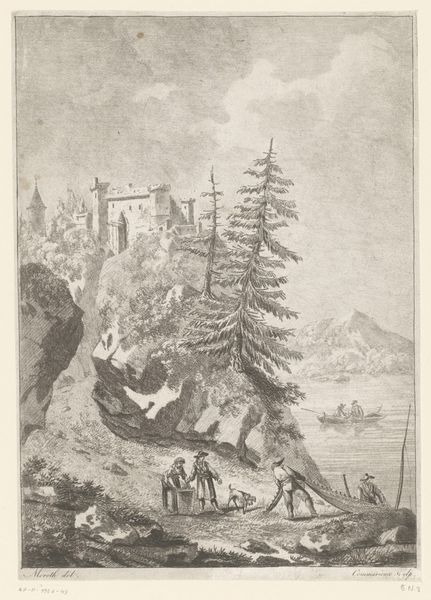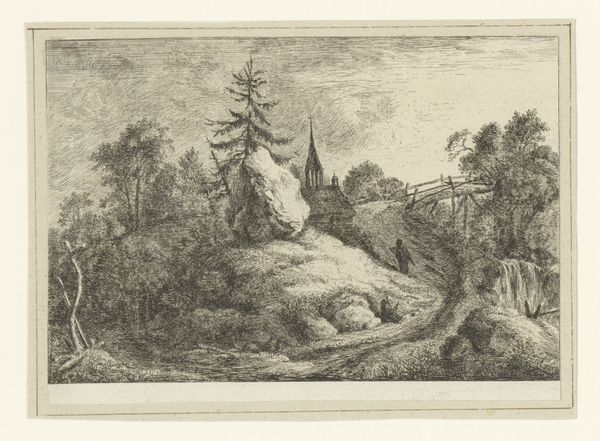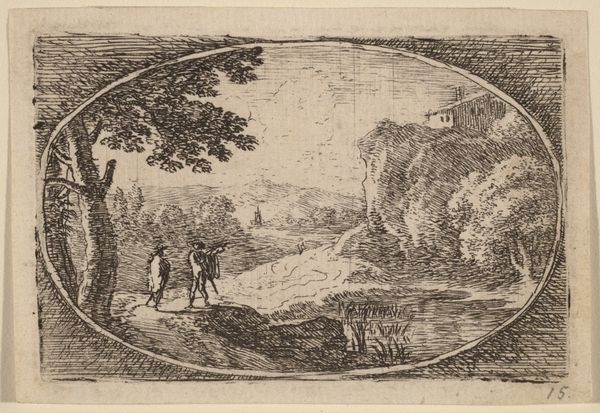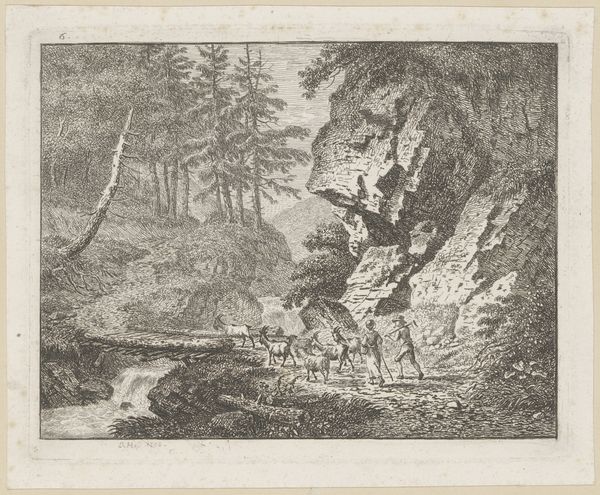
Colossal statue of the Appenino by Giambologna to left, represented as a giant crouching at the entrance of a grotto, ramps to either side, a pond below, various figures, dogs, and birds to right, from 'Views of the villa at Pratolino' (Vues de la villa de Pratolino) 1648 - 1658
0:00
0:00
drawing, print, etching, sculpture
#
drawing
#
baroque
# print
#
etching
#
landscape
#
figuration
#
sculpture
Dimensions: Sheet: 12 3/8 x 17 5/16 in. (31.5 x 43.9 cm) Plate: 10 3/16 x 15 1/8 in. (25.8 x 38.4 cm)
Copyright: Public Domain
This print by Stefano della Bella captures Giambologna’s Colossal statue of the Appenino, a monumental sculpture erected in the late 16th century at the Villa di Pratolino near Florence. Della Bella’s detailed rendering evokes the cultural and political landscape of Renaissance Italy, where art served as a tool for expressing power, wealth, and humanist ideals. The statue, a personification of the Apennine Mountains, embodies a complex interplay between nature and culture. It was created during a period of significant social stratification. The patronage of the ruling Medici family dictated much of the art that was produced. Consider the emotional impact of encountering such a figure. The sculpture blurs the lines between the natural and the artificial, a commentary on human attempts to dominate and transform the environment. This tension remains relevant today, as we continue to grapple with our relationship to the natural world and how we represent it.
Comments
No comments
Be the first to comment and join the conversation on the ultimate creative platform.
